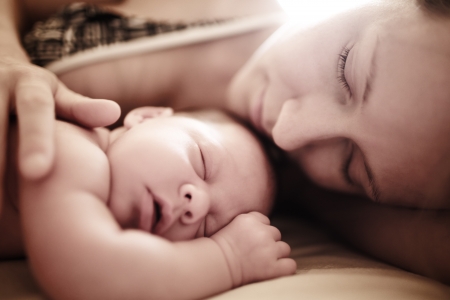Understanding Safer Sleep Guidelines in the UK
In the United Kingdom, newborn sleep safety is a major focus for both midwives and health visitors, reflecting national guidance aimed at reducing the risk of sudden infant death syndrome (SIDS). The NHS and The Lullaby Trust are key authorities offering evidence-based recommendations that are tailored to the UK population. These guidelines emphasise placing babies on their backs to sleep, keeping their sleep environment clear of loose bedding and toys, and ensuring that cots or Moses baskets are positioned in the same room as parents for at least the first six months. Additionally, country-specific advice includes maintaining a smoke-free environment, avoiding overheating, and using a firm, flat mattress with a well-fitted sheet. Such guidance is shaped by ongoing research and UK-specific data on infant safety, ensuring families receive up-to-date information relevant to their local context. By adhering to these nationally endorsed recommendations, parents can significantly lower the risk of SIDS and support safe sleep practices from birth.
2. The Role of Midwives and Health Visitors
In the UK, midwives and health visitors play a pivotal role in guiding families through the crucial early weeks of their newborns life, with a significant focus on sleep safety. Their professional responsibilities extend beyond clinical care to encompass education, prevention, and ongoing support, ensuring that parents are well-informed about best practices for reducing risks such as sudden infant death syndrome (SIDS). Both professions are governed by national standards and guidelines set by organisations such as the National Institute for Health and Care Excellence (NICE) and the NHS.
Professional Responsibilities
| Role | Main Focus Areas | Key Activities Related to Sleep Safety |
|---|---|---|
| Midwife | Antenatal & Postnatal Care | Educating parents during pregnancy and after birth about safe sleeping positions, appropriate bedding, and creating a safe sleep environment. |
| Health Visitor | Community-Based Family Support | Providing home visits, reinforcing safe sleep messages, observing sleep environments, addressing parental concerns, and signposting to further resources. |
Collaboration Between Midwives and Health Visitors
The handover from midwife to health visitor is a key moment for continuity of care. Typically, midwives support families up to 10-14 days post-birth before transferring care to health visitors, who then offer long-term guidance. This collaborative approach ensures consistent messaging regarding newborn sleep safety throughout the early months.
Empowering Parents Through Evidence-Based Advice
Both midwives and health visitors are trained to provide evidence-based information rooted in current UK guidelines. They actively dispel myths surrounding infant sleep and address common misconceptions in culturally sensitive ways. By offering tailored advice—such as discussing safe co-sleeping practices or the importance of placing babies on their backs to sleep—these professionals empower parents to make informed choices that prioritise their baby’s wellbeing.

3. Practical Advice on Infant Sleep Position and Environment
Safe Sleep Positions
UK midwives and health visitors consistently recommend that newborns should always be placed on their backs to sleep, both for daytime naps and at night. This position has been shown to significantly reduce the risk of sudden infant death syndrome (SIDS). Side or tummy sleeping positions are not advised unless specifically recommended by a medical professional for unique clinical reasons.
Cot Arrangements
The babys cot should meet current British safety standards and be free from clutter. Only a firm, flat mattress with a fitted sheet is recommended. Parents are advised to avoid using pillows, soft toys, cot bumpers, or loose bedding, as these can increase suffocation and overheating risks. The cot should ideally be placed in the parents’ room for at least the first six months, but never share the same sleep surface as an adult.
Bedding and Room Temperature
Lightweight blankets or baby sleep bags are preferable over duvets or quilts. Blankets should be tucked in no higher than the babys shoulders and placed firmly under the mattress to prevent covering the face. Health visitors suggest maintaining the room temperature between 16–20°C (60–68°F) to minimise overheating. Parents should check their baby’s chest or back to gauge warmth rather than relying on hands or feet.
Avoiding Co-Sleeping Risks
While many UK families may find co-sleeping tempting, especially during night feeds, NHS guidance is clear: it is safest for babies to sleep in their own cot or Moses basket. Co-sleeping increases risks of SIDS and accidental suffocation, particularly if parents smoke, have consumed alcohol, or are very tired. If co-sleeping does occur, extra caution is urged—never on sofas or armchairs and never with heavy bedding.
4. Breastfeeding, Dummies, and Sleep Safety
UK midwives and health visitors consistently highlight the importance of both breastfeeding and thoughtful dummy (pacifier) use in relation to infant sleep safety. Their advice is grounded in current evidence and national guidance, aiming to reduce the risk of Sudden Infant Death Syndrome (SIDS) while supporting infant development and parental confidence.
Breastfeeding and Sleep Safety
Exclusive breastfeeding is strongly recommended for the first six months of life by the NHS and Unicef UK Baby Friendly Initiative. Research indicates that breastfed babies have a lower risk of SIDS. The act of breastfeeding also promotes lighter sleep cycles in infants, which may contribute to this protective effect. Midwives encourage mothers to feed responsively day and night, ensuring safe sleep practices are maintained every time the baby sleeps.
Key Benefits of Breastfeeding Related to Sleep Safety
| Benefit | Evidence/Recommendation |
|---|---|
| Reduced SIDS risk | Consistently associated with lower SIDS rates in UK studies |
| Lighter infant sleep cycles | May increase arousal from sleep, providing a safety mechanism |
| Supports responsive parenting | Mothers more likely to maintain proximity, facilitating safer sleep environments |
Dummy (Pacifier) Use: What Do UK Professionals Advise?
The use of dummies as a sleep safety measure is nuanced. According to Lullaby Trust and NHS guidance, offering a dummy at all sleep times may reduce SIDS risk once breastfeeding is well established (usually after four weeks). However, dummies should not be forcibly reinserted if they fall out during sleep, and parents are advised not to coat dummies in sweet substances or tie them around the babys neck.
Dummy Use: Evidence-Based Recommendations
| Practice | UK Guidance/Evidence |
|---|---|
| Introduce after breastfeeding established | Recommended by NHS and Lullaby Trust (from about 4 weeks) |
| Use for all day and night sleeps if chosen | SIDS risk reduction seen when used consistently for all sleeps |
| Do not force or reinsert if expelled during sleep | No need to replace once baby falls asleep; do not force use |
| Avoid sweet coatings or neck ties | Reduces choking and dental risks; keeps practice safe |
Summary Advice from UK Midwives and Health Visitors:
– Prioritise exclusive breastfeeding where possible for at least the first six months
– If choosing to use a dummy, introduce it only after breastfeeding is firmly established
– Always combine these practices with other safe sleep measures: place baby on their back, keep cot clear of soft bedding, and share a room but not a bed for the first six months
– Seek personalised support from your health visitor or midwife with any questions about feeding or safe sleeping practices for your newborn
5. Parental Smoking and Alcohol: Risks and Advice
UK midwives and health visitors place significant emphasis on the risks associated with parental smoking and alcohol consumption, especially when it comes to newborn sleep safety. Both factors are well-established contributors to sudden infant death syndrome (SIDS) and other sleep-related complications, prompting a proactive approach from health professionals across the country.
The Dangers of Smoking Around Newborns
Smoking during pregnancy and after birth is strongly discouraged by UK health services. Exposure to tobacco smoke, whether direct or second-hand, increases a baby’s risk of SIDS and respiratory illnesses. Midwives routinely discuss the dangers of smoking with expectant parents, offering tailored support for those wishing to quit. Home visits often include practical advice on maintaining a smoke-free environment, such as never allowing smoking indoors or around the baby and ensuring that anyone who smokes changes clothing before handling the newborn.
Alcohol Consumption and Its Impact on Sleep Safety
Drinking alcohol is also identified as a major risk factor for unsafe sleeping situations. Health visitors advise that alcohol impairs judgement and responsiveness, making it unsafe for adults under its influence to co-sleep with infants or be responsible for their care overnight. Parents are urged to avoid drinking if they are the primary carer overnight or if there is any chance they may fall asleep while holding their baby.
How Health Professionals Address These Issues
Midwives and health visitors in the UK adopt a non-judgemental but firm stance when discussing smoking and alcohol. They use evidence-based leaflets and open conversations to highlight risks, while also signposting parents to local stop-smoking services or support groups for reducing alcohol intake. These discussions are woven into both antenatal and postnatal appointments, recognising that ongoing encouragement can make a significant difference in parental behaviour.
Promoting a Safe Sleep Environment
Ultimately, UK health professionals reinforce that the safest sleep environment for babies is one free from tobacco smoke and influenced by sober carers. By addressing these topics openly and providing practical support, midwives and health visitors empower families to make choices that reduce risk and promote the healthiest start for their newborns.
6. Supporting Families from Diverse Backgrounds
The UK is home to a rich tapestry of cultures, and midwives as well as health visitors recognise the importance of providing newborn sleep safety advice that respects and embraces this diversity. Culturally sensitive communication is essential to ensure all families feel understood and supported, regardless of their background.
Understanding Cultural Practices
Many families may have traditional beliefs or customs around infant care and sleeping arrangements, such as co-sleeping or the use of specific bedding. UK professionals are trained to approach these practices with respect, engaging in open dialogue rather than judgement. By discussing both cultural values and current evidence-based guidelines, midwives and health visitors help families make informed choices that prioritise baby’s safety.
Inclusive Advice for Every Family
Advice on safer sleep—such as placing babies on their back, using a clear cot, and avoiding loose bedding—is tailored to be accessible for all, including those whose first language is not English. Leaflets, translated materials, and visual aids are often provided. Professionals also work closely with interpreters or community champions when needed, ensuring key messages about sleep safety reach everyone.
Addressing Barriers to Safe Sleep
Some families may face challenges related to housing conditions or financial constraints. UK health professionals signpost parents to relevant support services and adapt guidance where possible, always aiming to reduce risk while being practical about each family’s circumstances.
Building Trust through Respectful Engagement
The foundation of effective support lies in building trust. Midwives and health visitors strive to create a welcoming environment where parents can express concerns or ask questions freely. This collaborative approach not only promotes safe sleep but also strengthens relationships between healthcare providers and the diverse communities they serve.

